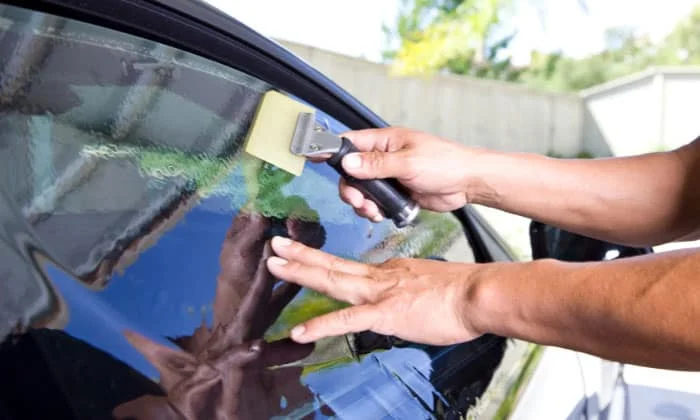With the holiday season approaching, many people turn to decorations to bring the festive spirit into their homes. One popular decoration is fake snow, which can create a winter wonderland effect without the cold weather. However, a common concern among homeowners is whether fake snow can damage windows. This article will delve into the types of fake snow, their potential effects on windows, and best practices to ensure your decorations are safe and enjoyable.
Types of Fake Snow

Fake snow comes in various forms, each with different ingredients and methods of application. Understanding these types can help determine their impact on windows:
1. Spray-On Snow
Spray-on snow is an aerosol product that mimics the appearance of snow when sprayed onto surfaces like windows, mirrors, and other glass items. It is made from a mixture of water, soap, and propellants.
2. Powdered Snow
Powdered snow consists of finely milled plastic or other materials that, when mixed with water, expand and create a snow-like texture. It is often used for indoor decorations on tabletops or Christmas villages.
3. Cotton Batting
Cotton batting or synthetic fiber snow is used to cover large areas and is often found in window displays or under Christmas trees. It is made from cotton or polyester fibers and is usually laid out manually.
4. Snow Blankets
Snow blankets are rolls of synthetic material designed to look like snow. They are typically used for larger displays and are made from polyester or similar materials.
Potential Effects on Windows
The impact of fake snow on windows largely depends on the type of snow used and the duration it remains on the glass. Here’s a closer look at the potential effects:
1. Spray-On Snow
Pros:
- Easy to apply and remove.
- Creates a realistic snow effect on glass surfaces.
Cons:
- If left on for extended periods, spray-on snow can harden and become difficult to remove.
- The chemicals in the aerosol can sometimes leave a residue that might require thorough cleaning.
- There is a slight risk of scratching the glass if scrubbed too vigorously during removal.
2. Powdered Snow
Pros:
- Generally safe for use on windows.
- Easy to clean up with water.
Cons:
- Can create a mess if not properly contained.
- Residual particles might cling to window crevices, requiring detailed cleaning.
3. Cotton Batting
Pros:
- Safe and non-damaging to windows.
- Easy to remove and reuse.
Cons:
- Can leave fibers on the glass, necessitating a good wipe-down.
- Not suitable for a realistic snow effect on the glass itself.
4. Snow Blankets
Pros:
- Easy to use and remove.
- No risk of chemical damage to windows.
Cons:
- Not practical for applying directly to the glass; more suitable for surrounding decorations.
Preventing Damage to Windows
To ensure that your festive decorations do not result in unwanted damage, follow these best practices:
1. Preparation
- Clean the Windows: Start with clean windows to ensure the fake snow adheres well and is easier to remove later.
- Test a Small Area: Before applying fake snow extensively, test a small inconspicuous area to ensure it doesn’t damage the glass or leave a residue.
2. Application
- Use Sparingly: Apply fake snow in moderation. Overloading can increase the risk of residue or difficulty in removal.
- Avoid Edges and Seals: Keep fake snow away from window edges and seals to prevent accumulation in crevices where it might be harder to clean.
3. Removal
- Timely Cleaning: Remove fake snow soon after the holiday season to prevent hardening or residue buildup.
- Gentle Cleaning Solutions: Use mild soap and water or window cleaner. Avoid abrasive materials or chemicals that can scratch or damage the glass.
- Soft Cloth or Sponge: Use a soft cloth or sponge to gently remove fake snow. For stubborn areas, let a damp cloth sit on the spot to soften the residue before wiping.
Environmentally Friendly Options
For those concerned about environmental impact and window safety, there are eco-friendly alternatives to traditional fake snow:
1. Cornstarch Snow
Cornstarch mixed with water can create a snow-like texture that is easy to clean and environmentally friendly.
2. Biodegradable Snow
Some companies offer biodegradable fake snow made from eco-friendly materials. These products are designed to be safe for both the environment and your home surfaces.
Alternative Decorations
If you’re hesitant about using fake snow on your windows, consider these alternative decorations to create a festive atmosphere:
1. Window Clings
Window clings are decorative stickers that adhere to the glass without adhesive, making them easy to apply and remove without leaving residue.
2. LED Window Lights
LED lights can be arranged in festive patterns and attached to windows using suction cups or adhesive hooks, providing a bright and cheerful display without any risk of damage.
3. Garland and Wreaths
Hang garlands or wreaths around your windows for a festive touch. Use hooks or removable adhesive strips to avoid damaging the glass.




